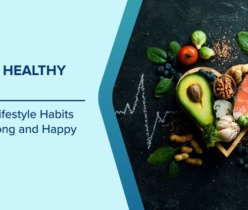Cooking with the scraps is not a passing trend; it’s a turn toward sustainable living and better eating in a world that wastes way too much food. When you make the most of your ingredients using every part and repurposing leftovers, you end up with flavorful, nutritious meals while cooking smartly and sustainably. Additionally, it’s a means to reduce household bills, as some calculations indicate a family can slash their food bills by more than $1,000 a year through conscious consumption and lower waste. It’s for the money as much as saving the planet.
Why Zero-Waste Cooking Matters
Tens of millions of tons of food are thrown away by households globally. This imposes pressure on the world’s food system and on greenhouse gas emissions, but not on our wallets. We can all save money at the grocery store, reduce our carbon footprint, and encourage conscious consumption by following a zero-waste lifestyle.
Small, regular decisions with a significant environmental impact count more than being perfect.
The Art of Cooking with Leftovers
It’s an art to transform leftovers into delicious food; it pushes you into your imagination and inspiration. You see the importance of every ingredient. Dinner from yesterday can turn into something totally different today with a few easy changes.
Bread rusks can be made from breadcrumbs or a sweet bread filling in the case of Hard bread. Rice that is not eaten can be changed into fried rice, rice pudding, or stuffed bell peppers. You can even throw cooked veggies into “soups, wraps, or savory pancakes.”
The secret is to purposefully plan your diet so that every component is operated in some volume throughout the week.
Smart Packing for a Zero-Waste Kitchen
To avoid spoiling food, particularly when stored in better conditions. The better storage of fruits, vegetables, grains, and proteins can improve health.
- Store snacks and grains in containers.
- To extend their freshness, store herbs in a pot with water, just like flowers.
- Before it goes bad, freeze extra produce; frozen fruits make smoothie elements.
- To confirm that nothing is overlooked in the back of the freezer, the date remains.
The basis of a zero-waste kitchen is a skillfully arranged refrigerator.
Advance Planning: The Key to Zero-Waste Cooking
Meal planning is good for your schedule, your wallet, and your stress levels. Planning your meals is healthy for the planet. Whenever you write a shopping list, you get to vote for a more sustainable world. Plan your daily meals around what you already have to prevent waste and help cut down on your food waste contribution.
- Check your fridge and pantry before you shop.
- Cook with what you have. Use the ingredients you have on hand to cook flexible meals. To preserve freshness, buy nearby and in smaller quantities.
- Include days when you use up perishables, known as “clean-out-the-fridge” days.
Try Your Hand at These Creatively Zero-Waste Recipes
Here are a few simple but better recipes to make with your leftovers:
1. Vegetable Tussle Soup
If you have them on hand, freeze celery ends, carrot tops, and onion skins, then cook up a tasty broth by simmering them in water with a little basil. Straining and established aside for soups.
2. Rice Wastes with Leftovers
Add a crushed egg, flour, sliced vegetables, and waste rice. Perfect as a light snack or side plate, fry till golden and crunchy.
3. Conserve with Citrus Peel
Skins from lemons and oranges should not be thrown! To make a fresh, aromatic marmalade, boil them with water and sugar.
4. Coating with Bread Scraps
For a crispy pasta or crockpot coating, mix dried bread with olive oil and herbs.
These recipes are easy, tasty, and prove that “waste” is simply a component in the requirement of an additional chance.
The Healthy Profits of Zero-Waste Cooking
Benefits: Meals prepared from scratch with fresh, whole ingredients tend to be more nutrient-rich. We retain essential vitamins, minerals, and fiber that are typically wasted if we don’t use the entire fruit or vegetable.
For example:
- Potato skins contain potassium and vitamin C
- Broccoli stems are a good source of fiber and antioxidants; • Citrus juices have an everyday flavor and blends that boost the immune system.
This is how zero-waste cooking benefits our bodies just as much. While also promoting the environment.
Living Zero-Waste Cooking
You don’t need to sacrifice to live a healthy life. Occasionally, this change in habits not only minimizes waste but also heightens the sense of gratitude for the food we consume. Let’s say everything in your freezer has a shelf life once it’s opened. Zero-waste cooking gives you a kitchen full of chances rather than faults.
Bottom line: Small Steps, Big Change
Zero-waste cooking is a path, not a place. Each recycled ingredient, every saved meal, and every recipe that inspires is a step towards a better planet and a brighter kitchen. By learning to see scraps as opportunities. We can all contribute to shaping a sustainable future, one bowl at a time.
FAQs
1. Why is zero-waste cooking important?
It’s a great way to cut down on waste, save on groceries, and eat more mindfully, too. Plus, you’ll learn a few tricks for turning everyday ingredients into meals that will impress friends and family — or just you.
2. Are leftovers still nutritious?
Yes! Leftovers maintain most of their nutrients. And sometimes dishes such as soups, stews, and curries actually taste better the next day as the flavors go deeper.
3. How long can you keep cooked food?
Most cooked food, properly stored in airtight containers, can be safe in the refrigerator for 3 to 4 days. Freezing is an excellent method if you want to store them for longer.



